Co-Curricular Activities (CCA) are a unique part of life at Pao School and are an integral part of the whole-person education philosophy. CCAs allow students to not only explore their personal interests, but also cultivate skills that help them to increase the specialised knowledge they have in their areas of interest. At the middle school, students can sign up for different activities each semester, with CCA options spanning across four areas: Chinese culture, sports, performing and visual arts, and outreach activities.
Optoelectronics Laboratory:
Why do automatic doors open automatically when people approach? How can electric irons maintain a constant temperature? How do electronic scales work?
At the beginning of this semester, the Head of Middle School Science Ms. Weng Meiqian and Science teacher Ms. Andy Hou set up a CCA called Optoelectronics Laboratory, which focuses on practical content about optics and electricity. Through this activity, the students are able to connect the knowledge they learn about light and electricity in the classroom to real life applications of the science.

In total, more than 30 students from Years 6 to 8 participated in this co-curricular activity. Each Year gained something unique from the activity. For instance, Year 6 students were able to preview upcoming classroom learning; Year 7 students deepened their existing knowledge about the subject matter; and, Year 8 students could use the CCA to review and expand upon what they had learned previously.
Ms. Hou explained that, alongside Ms. Weng, the CCA was started with the hope that students could get a deeper understanding of technology. She noted that students are always interested in learning more about advanced technology and smart devices but find that they are a bit challenging to understand. Therefore, by explaining simple scientific principles and how to apply them in everyday life, they students can discover how certain technology can be useful for them and others.
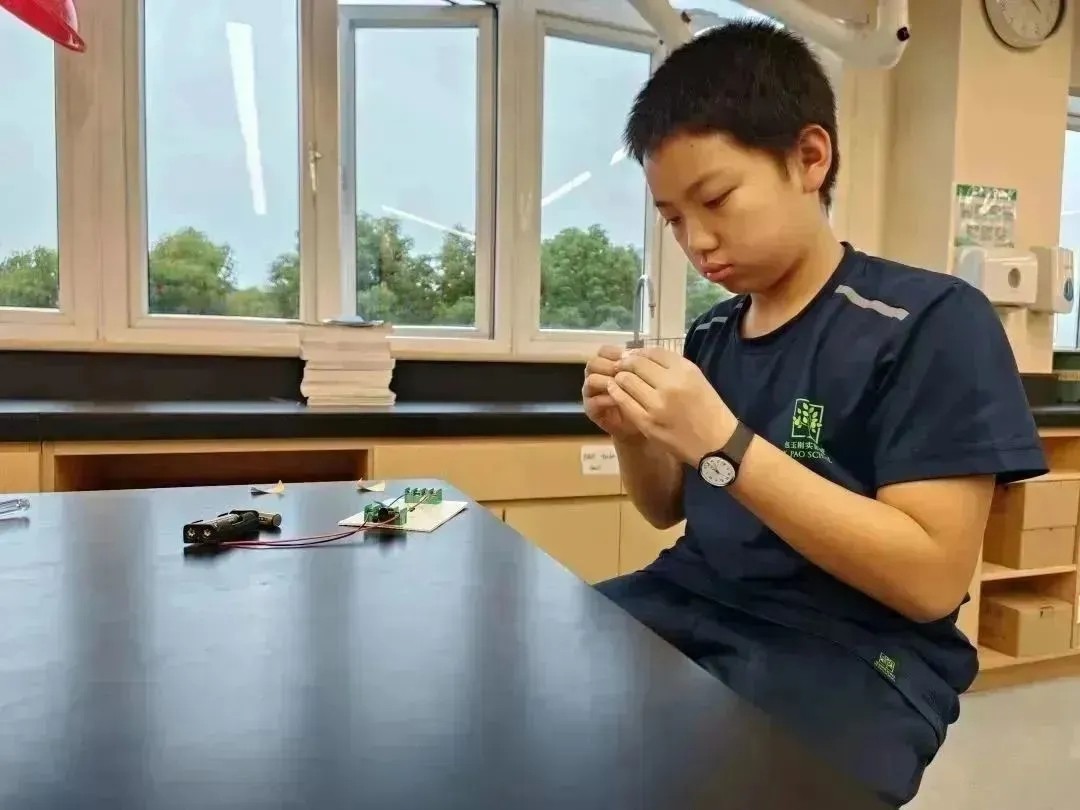
In particular, the Optoelectronics Laboratory CCA focuses on two subject areas: optics and electricity. Optics is primarily concerned with teaching a basic knowledge of light, including how it is propagated, reflection and refraction, and 3D phenomena. For example, in one activity, the students worked together to build a kaleidoscope and a multi-mirror light tunnel.
In the CCA, the topics related to electricity focus on sensors, including how they work, how they are classified, and their basic applications. Therefore, the students were given a detailed introduction to three disciplines in which sensors are used: physics, chemistry and biology. After learning the underlying and foundational science behind sensors, the students started to experiment with using various sensor components, such as resistors, diodes, and modules. These were connected to inductors by the students, who referenced circuit diagrams for their designs. The finished products that had defects are repaired and re-energised. This process helps students to put into practice theoretical knowledge learned in the classroom, showing students how ostensibly abstract principles have important practical applications.
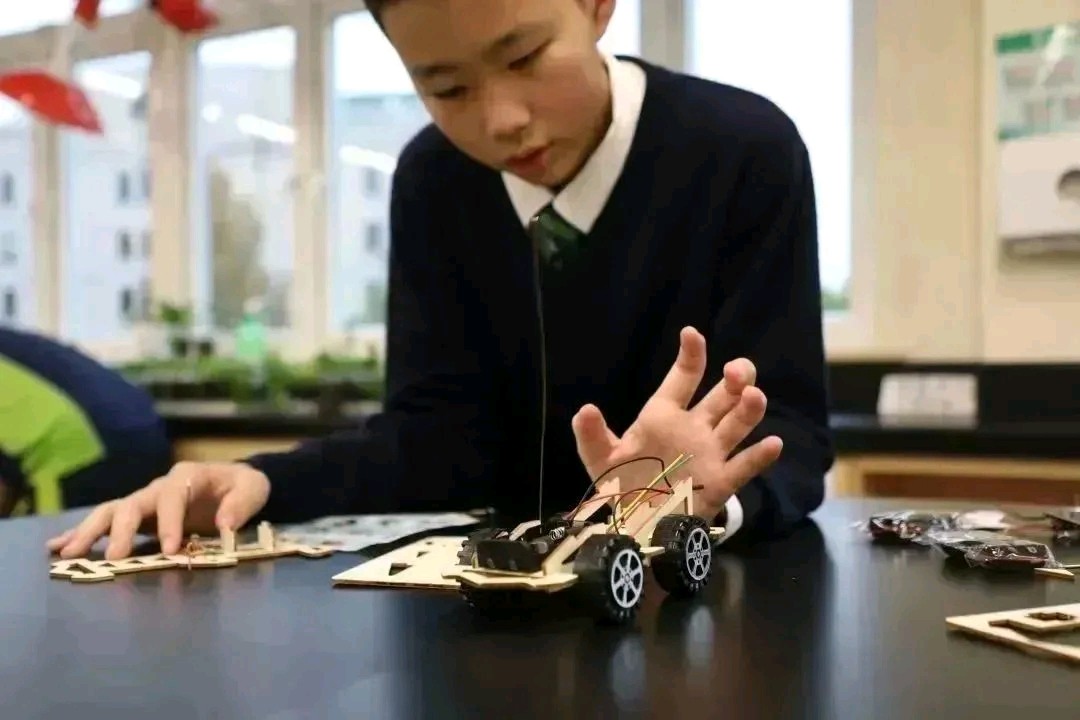
At the end of the CCA, each student submitted a complete experimental project. For the project, the students started by completing an initial design of the work, then drew a mock-up, searched for the necessary components, conducted tests, and made adjustments after assembly was completed. Among the finished projects, there were a variety of different designs, such as voice-controlled lights, voice-activated cars, intelligent water sprinklers, sensor-activated alarms, and remote-controlled racing cars.
Year 8 students also shared some thoughts on what they learned through the CCA:
Ethan says that he chose the Optoelectronics Laboratory activity because it provides many opportunities for hands-on science experiments. In the CCA, he made a set of infrared receiving and emitting sensors and sounding devices. He noted that these sensors function the same way as those in banks that are part of burglar alarms, which we can often see in the movies.

Lucas found the temperature sensors and fire extinguishers they made in class especially interesting. He explained that a fire extinguisher works by sensing a temperature rise, the sensor then activates a valve, causing the water to spray out and extinguish the fire. What is particularly interesting is that you can also adjust the sensitivity of the sensor during the process.
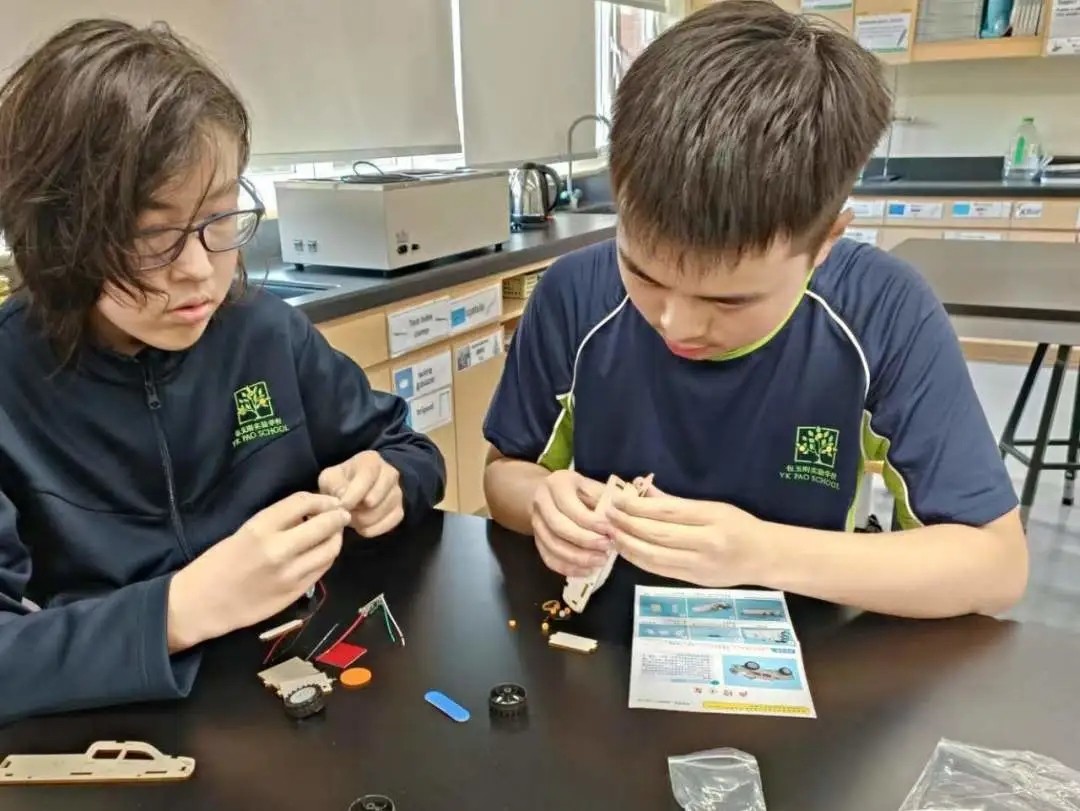
Wilson was most impressed by the microphone sensor, which uses sound to control the brightness of a light bulb. Heidi used many small circuit groups to build an alarm. In the process, she learned how to see the circuit and resistance, and improved her hands-on abilities.
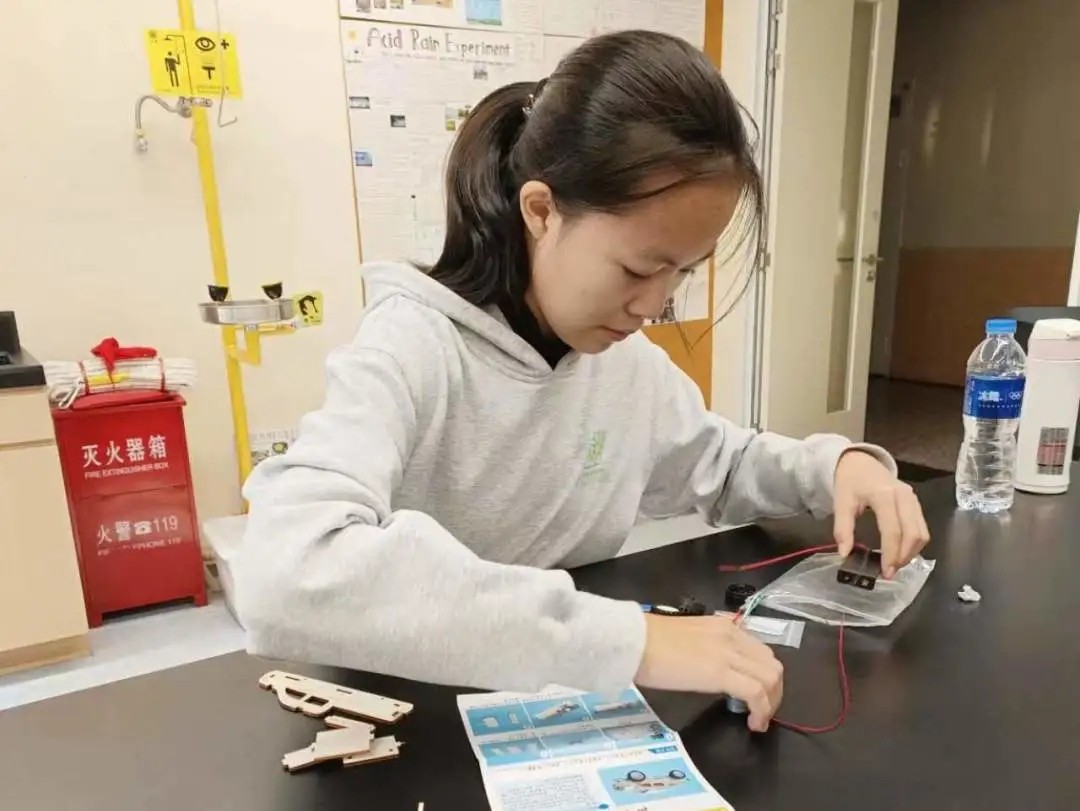
Chinese Cultural Activities:
The Qingshui Poetry Club, which is extremely popular amongst the students, was founded in 2017. The CCA gives students a chance to both study outstanding classical and modern Chinese poetry and also compose poetry of their own. According to Yang Jie, the teacher who supervises this CCA, the poetry club’s name comes from a piece composed by Zhu Xi, a neo-Confucianist during the Southern Song Dynasty: “There lies a glassy oblong pool, where light and shade pursue their course. How could it be so clear and cool? For fresh water comes from the source.”
"I first encountered and was moved by poetry in Year 1. Then, in Year 4, I began reading poetry regularly, but, to be frank, it has not always been smooth sailing. Chinese poetry is challenging in many regards, as it packs a lot of meaning into very few words. However, after I joined the Qingshui Poetry Club, with its warm, scholarly atmosphere, I began to experience the joy of learning poetry.”
——8A Yuan Mengqi
Additionally, students in the CCA composed poems of their own. The following are excerpts of some of their works:
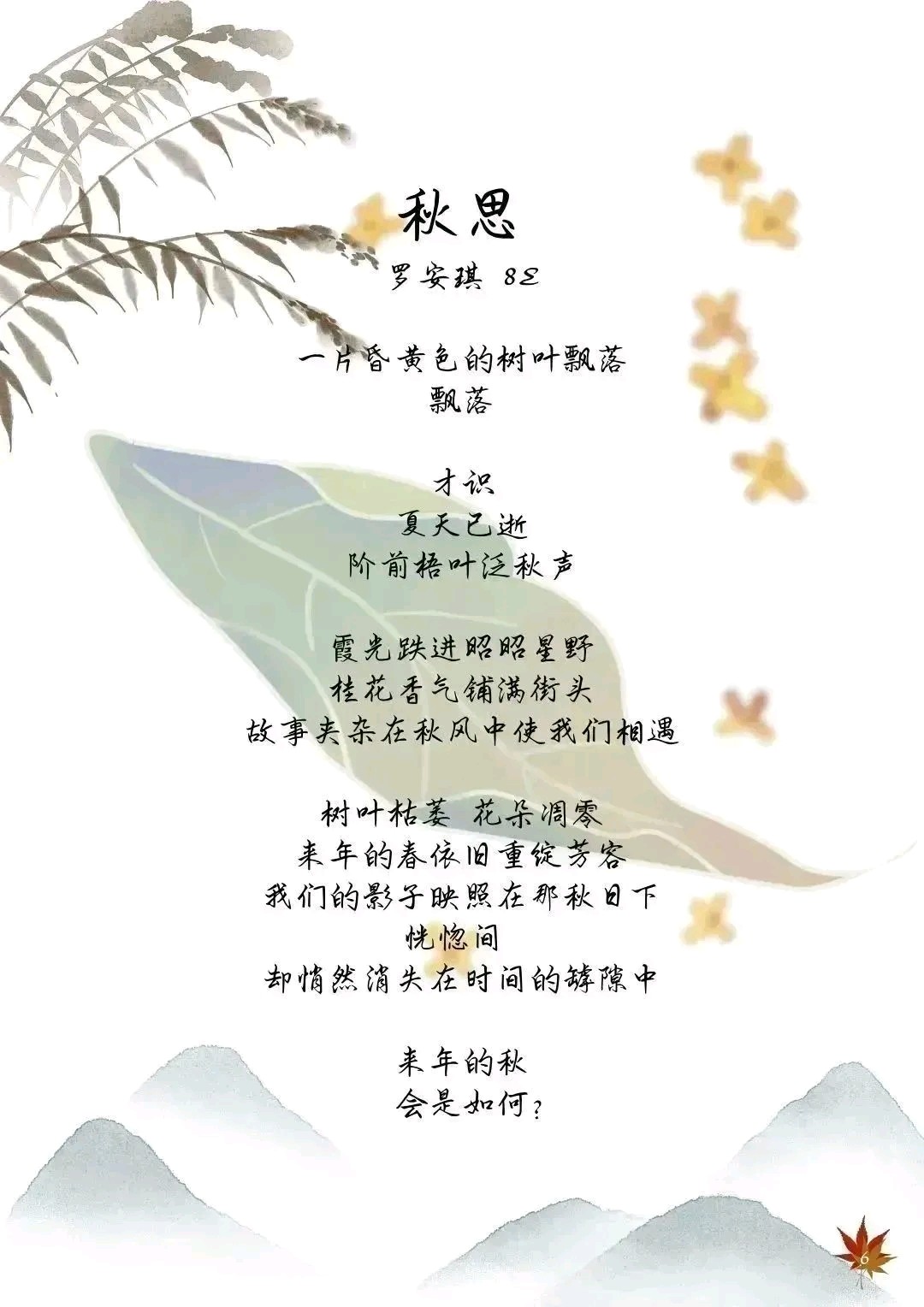

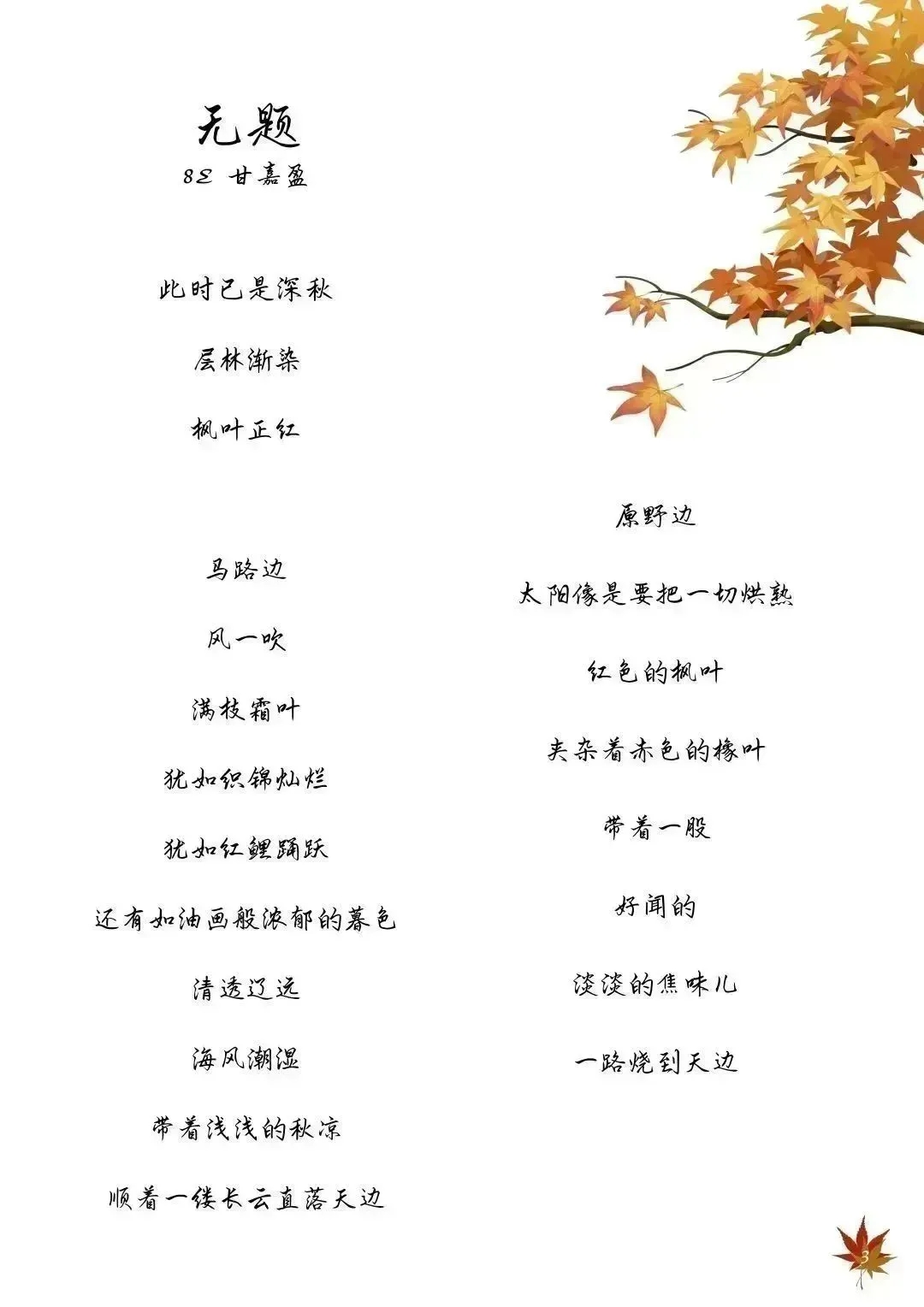
HIIT CCA
In the High-Intensity Interval Training (HIIT) CCA, students focus on improving themselves through doing bodyweight exercises such as burpees and squats. As a challenging work out, HIIT involves doing repeated intervals of these high-intensity exercises, with gaps of rest between them – allowing the students to not only exercise their muscles, but also their heart and lungs. The activity is led by Gordon Ojala, Middle School English Language Support teacher, who explains that he designed the club because he has a “passion for challenging workouts”. In addition, he says that it is particularly suitable for a busy lifestyle as it is a very efficient way to keep fit.

At the moment, 11 students take part in the CCA, allowing Mr. Ojala to make sure that their movements are safe and that they use the correct form for the different exercises. Through this type of activity, the students learn to challenge themselves and their limits, whilst also improving their overall fitness. In addition, as they are led by a knowledgeable teacher, they can learn to do the exercises safely. Importantly, as the training uses body weight and doesn’t require special equipment, the students can also do HIIT training wherever they are and can carry the knowledge into the future.

Warhammer CCA
The Warhammer CCA is based around the game of Warhammer 40,000, which allows players to create their own models – which all have different stats and abilities – to use to play a strategy-based tabletop battle game. As part of the CCA, the students not only play the game but also enjoy model making, which meant that they started off the CCA by building and painting. Now, as students play and organise their own games, they also continue to create and add more models to the game.
The activity is led by Matthew Yarroll, Middle School Humanities Teacher, who discovered the game himself when he was in middle school and still enjoys it as a hobby to this day. Currently, there are about 40 students in the CCA, which takes place twice a week. Alongside being a very fun activity, the students also have learned different skills as they’ve taken part, such as following instructions to construct something, satisfaction in the creative process, working in teams, and also strategic thinking.

*Photo by Iris and Alex, HQ CCA Press Team
CCAs are a fantastic way of imparting knowledge that can be acquired in a non-traditional way, with a large variety of choices – students can hopefully find a spark or interest.
——Daniel Nichols
Middle School Director of Student Life